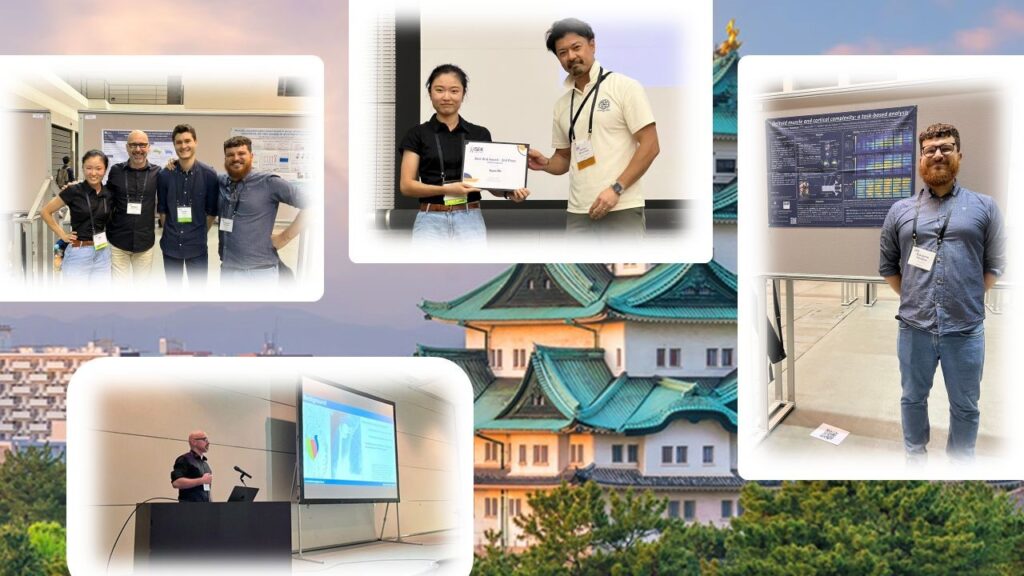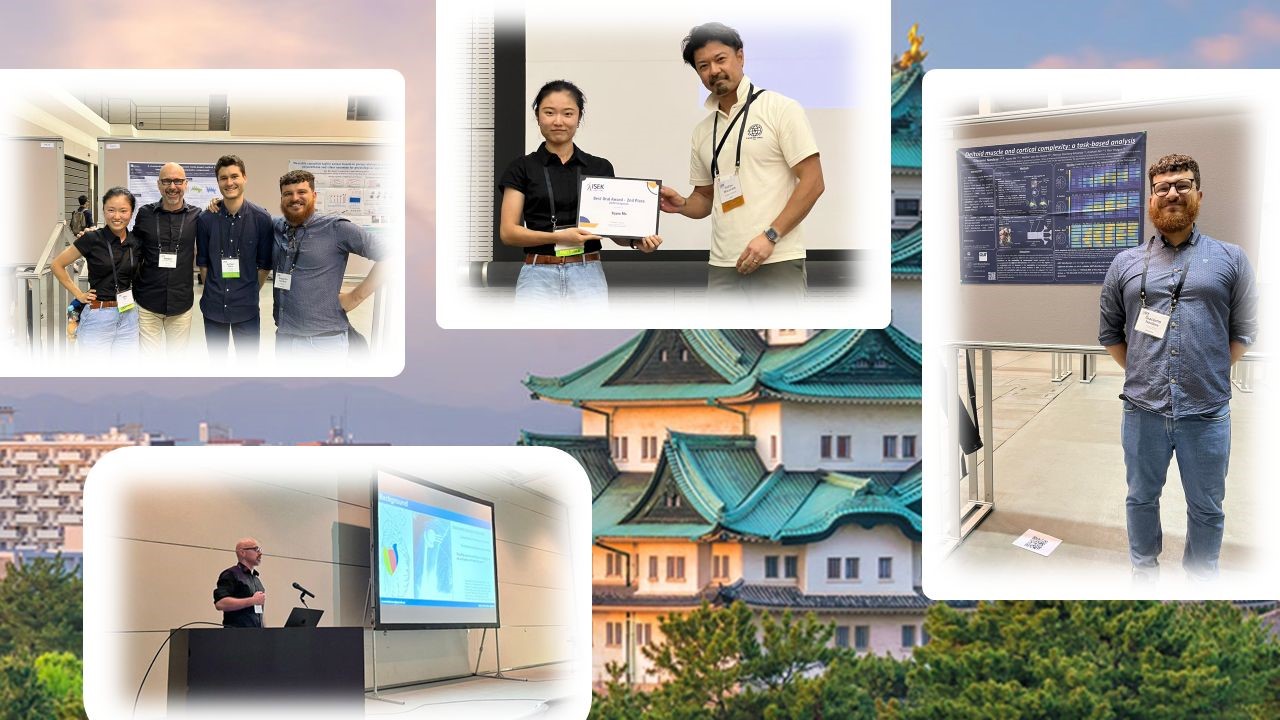Insights from ISEK 2024: Advancements in Upper Limb Research
26 – 29 June 2024 | Nagoya, Japan
The International Society of Electrophysiology & Kinesiology (ISEK) Conference held from June 26 to 29, 2024, served as a significant platform for the Centre’s Program 4 team, dedicated to In Vivo Assessment of Upper Limb Movements, Physiology, and Rehabilitation. The delegation made a notable impact, showcasing groundbreaking research that highlights advancements in understanding upper limb movements and rehabilitation techniques.
Highlighting Groundbreaking Research
Dr. Wolbert van den Hoorn presented his influential work on Motor Neuron Synergies of the Deltoid Muscle, which uncovers hidden patterns and synergies in human movement. His research offers valuable insights into the mechanisms underlying upper limb functionality, paving the way for improved rehabilitation strategies.
The program’s PhD students also made significant contributions, demonstrating their research excellence at the conference. Yuyao (Amy) Ma, based at The University of Queensland, was recognised as the runner-up for the Best HDR Presentation award, a testament to her impactful research and presentation skills.
PhD Student Contributions
The conference featured impressive poster presentations from two other PhD students:
Mr. Giacomo Nardese focused on Deltoid Muscle and Cortical Complexity. His task-based analysis revealed intricate cortical patterns essential for tailoring rehabilitation interventions to individual needs.
Mr. Arthur Fabre presented a poster on A Standardised Inertial Measurement Units-based Method for Upper Limb and Shoulder Kinematics Assessment. His research emphasises the importance of precise assessment techniques in understanding upper limb dynamics.
Celebrating Achievements
The success of the delegation at ISEK 2024 not only highlights the innovative research being conducted within Program 4 but also underscores the commitment to advancing knowledge in biomechanics and rehabilitation. The program’s emphasis on collaboration and excellence continues to inspire its members to push the boundaries of research and clinical practice.
“We are incredibly proud of our team’s achievements at ISEK 2024,” said a representative from the Centre. “Their hard work and dedication to understanding upper limb physiology will undoubtedly contribute to significant advancements in rehabilitation techniques.”
As the delegates return from Nagoya, they bring back valuable insights and connections that will further enrich their ongoing research and collaboration efforts, reinforcing the Centre’s position at the forefront of biomechanics and rehabilitation science.


